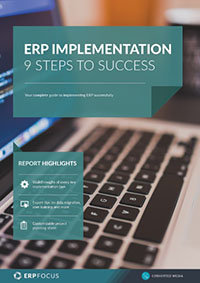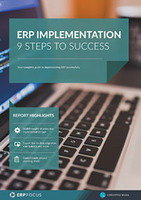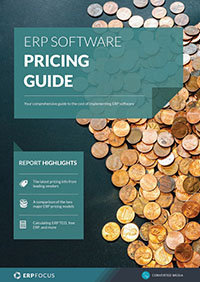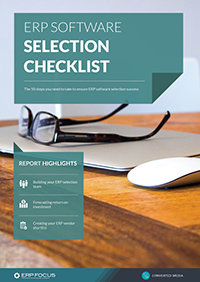ERP migration checklist
Migrating an ERP is tricky, whether you’re updating to the latest version, heading to the cloud, or adopting your first ERP platform. Thankfully, the new tools and functionality in modern platforms tend to make the switch worthwhile. If you’re looking for an extra guarantee for a positive ROI, it’s time to test and grow safely by building your own ERP migration checklist.
This list shows what you need to do and verify throughout the process, protecting data, sales, and resources. Here are a few of the must-have steps in any migration. Make them your own and add the details you need to your own ERP migration checklist, then share that with your entire team and vendor.
Plan phase
Before your new ERP gets off the ground or you move processes from disparate systems to a central ERP, you need a plan. Without a clear process and knowledge of how things are, there’s plenty of room to fail and keep your ROI from ever going positive.
So, there are a variety of things to check when you’re in the migration planning phase. Here are a few of the most pressing items to get you started thinking about your needs:
- Timeline: Build a full timeline for your process and steps
- Vendor check: Discuss the timeline with your vendor to ensure they have capacity. You’ll also want to check the release version of your software to get the latest or see if there will be a required update shortly after your launch.
- Resource list: Map resources to your timeline, noting software, integrations, people, and vendor requirements to get things done.
- Current customization list: Most companies have some custom scripts, reports, tasks, and screens in their ERPs. Specifically, note each and add their recreation in the new ERP to your to-do list.
- Draw workflows involving your ERP or the functionality. Update everything so you know where the ERP needs to operate and how. Look for ways to reduce manual data entry.
- New functionality: Address where new functionality fits in your workflows and processes.
Test phase
ERP migration needs a pilot or test phase to prepare your team for the new system. Testing allows you to work out the bugs without putting operations at risk. Surprisingly, many SMBs will turn on their ERP and then try to troubleshoot while it’s live. Instead of going through that terrible experience, run a pilot.
Here are some things that’ll help:
- Back it up: Build a backup of your data.
- Pilot database: Apart from your backup, duplicate your data and create a database specifically for your pilot project.
- Reporting: Work with your vendor to create reports and analytics to monitor the pilot.
- Create tests: Test everything your ERP will do, but also run a test of the migration itself!
- Review data: Check and validate data or clean as needed. Correct issues that you discover during migration and document them.
- Remediation: Put together a list of the problems you discover during your pilot, including how you measure these, report them, and how you plan to fix them.
- Complete tests: Finalize your pilot by testing workflows and remediations.
- Train your team: Don’t wrap up testing before you train your team.
Go live
The live phase of your ERP migration is all about cutting over and getting the new system online. Your team should be trained, and all vendor questions asked. After that, you’ll want to slowly walk through all the processes and reviews. Here are some of the ERP migration checklist items at this point:
- Cut off: Log out every user from the previous ERP or data platforms.
- Back it up: Create a backup of your most recent database.
- Fix: Address any of the data or other issues you identified in the pilot. Work with data before migrating it.
- Move: Migrate your database to the new software or release as needed.
- Integrate: Re-integrate all of your systems and verify the handshakes. APIs and other data-sharing tools should have test options.
- Activate users: Give all users the necessary logins and permissions. Have everyone check these immediately.
From here, it’ll largely be about managing your database and operating your ERP normally. Keep an eye out for data errors or training gaps. Your vendor should be willing to help with training for some time after the migration, so ask for help when you need it.
Free white paper

ERP Implementation: 9 steps to success
The 9 proven steps you should follow when implementing ERP

Featured white papers
-

ERP Software Pricing Guide
Get the latest pricing information on over 80 popular ERP systems, and learn how to budget for your ERP project in our free guide
Download -

60-Step ERP Selection Checklist
Get the comprehensive checklist for your ERP selection project
Download -

ERP Implementation: 9 steps to success
The 9 proven steps you should follow when implementing ERP
Download
Related articles
-

ERP migration steps (your ERP migration checklist)
How to construct the smoothest ERP migration plan possible
-

CMMC Compliance: What Aerospace and Defense Manufacturers Need to Know
Key insights on CMMC compliance, deadlines, and securing DoD contracts with CMMC 2.0 certificatio...
-

Handling your ERP data migration and transfers
The types of ERP data transfer and which you should choose for your data migration

